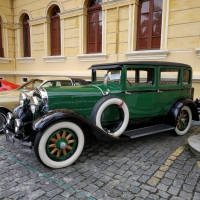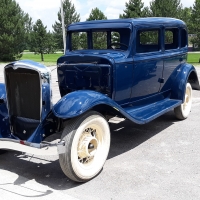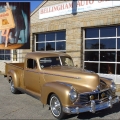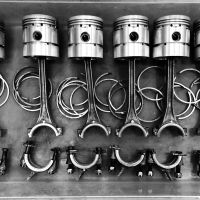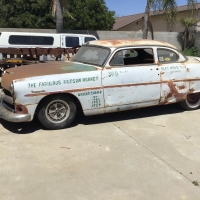1929 Hudson Super Six - engine overheating
Hello Guys!
I have just joined the forum, so let introduce myself.
I have just joined the forum, so let introduce myself.
I live in Brazil and have owned 1929 Hudson Super Six, standard sedan, since 2014. The car passed almost its complete lifein United States, when it was shipped from US to Brazil in 2014.
I also have other antique cars: 1926 Studebaker Big Six, sport roadster; 1928 Chevrolet National, touring; 1929 Dodge-Brothers Six, brougham; 1929 Chrysler 75, roadster; 1929 Marmon 78, touring speedster; 1951 Plymouth Cranbrook, 4 dr sedan and 1954 Willys Jeep, CJ3B.
When I bought the Hudson Super Six, I struggled to run the car because the engine turned very hot in few minutes, then many different services were done in the car: new radiator, water pump rebuild, carburetor adjustments, distributor adjustments, new spark plugs, rotor, ignition cables, contact points, ignition coil, battery, generator rebuild, starter rebuild, overhaul of brakes, new complete wiring harness, intake manifold welding, exhaust manifold new gaskets, and many other minor services and normal maintenance activities Despite of all these efforts, I cannot fully enjoy the car because its persistent overheating problem. The travel range of the car unfortunately is not exceeding 20 miles, more than that, the engine becomes very hot, the ignition coil becomes extremely hot and the engine looses power and fails. Then, to move the car, only cooling the ignition coil with a fresh wet towel. Many attempts of adjusting the distributor were made without complete success.
The weather here in the city I live in Brazil is hot in the summer (25-30C) and cold in the winter (5-10C), but the problem with the Hudson is the same In both periods. The gasoline in Brazil has 27% ethanol on the mixture. My other cars manage very well these weather and fuel conditions.
When I bought the Hudson Super Six, I struggled to run the car because the engine turned very hot in few minutes, then many different services were done in the car: new radiator, water pump rebuild, carburetor adjustments, distributor adjustments, new spark plugs, rotor, ignition cables, contact points, ignition coil, battery, generator rebuild, starter rebuild, overhaul of brakes, new complete wiring harness, intake manifold welding, exhaust manifold new gaskets, and many other minor services and normal maintenance activities Despite of all these efforts, I cannot fully enjoy the car because its persistent overheating problem. The travel range of the car unfortunately is not exceeding 20 miles, more than that, the engine becomes very hot, the ignition coil becomes extremely hot and the engine looses power and fails. Then, to move the car, only cooling the ignition coil with a fresh wet towel. Many attempts of adjusting the distributor were made without complete success.
The weather here in the city I live in Brazil is hot in the summer (25-30C) and cold in the winter (5-10C), but the problem with the Hudson is the same In both periods. The gasoline in Brazil has 27% ethanol on the mixture. My other cars manage very well these weather and fuel conditions.
Any suggestions how to address this issue? I talked with some Hudson Super Six owners and overheating seems to be a common problem.
Any help will be very much appreciated.
Any help will be very much appreciated.
Thanks
Julio Albernaz
julioalbernaz@hotmail.com
+5521993512998
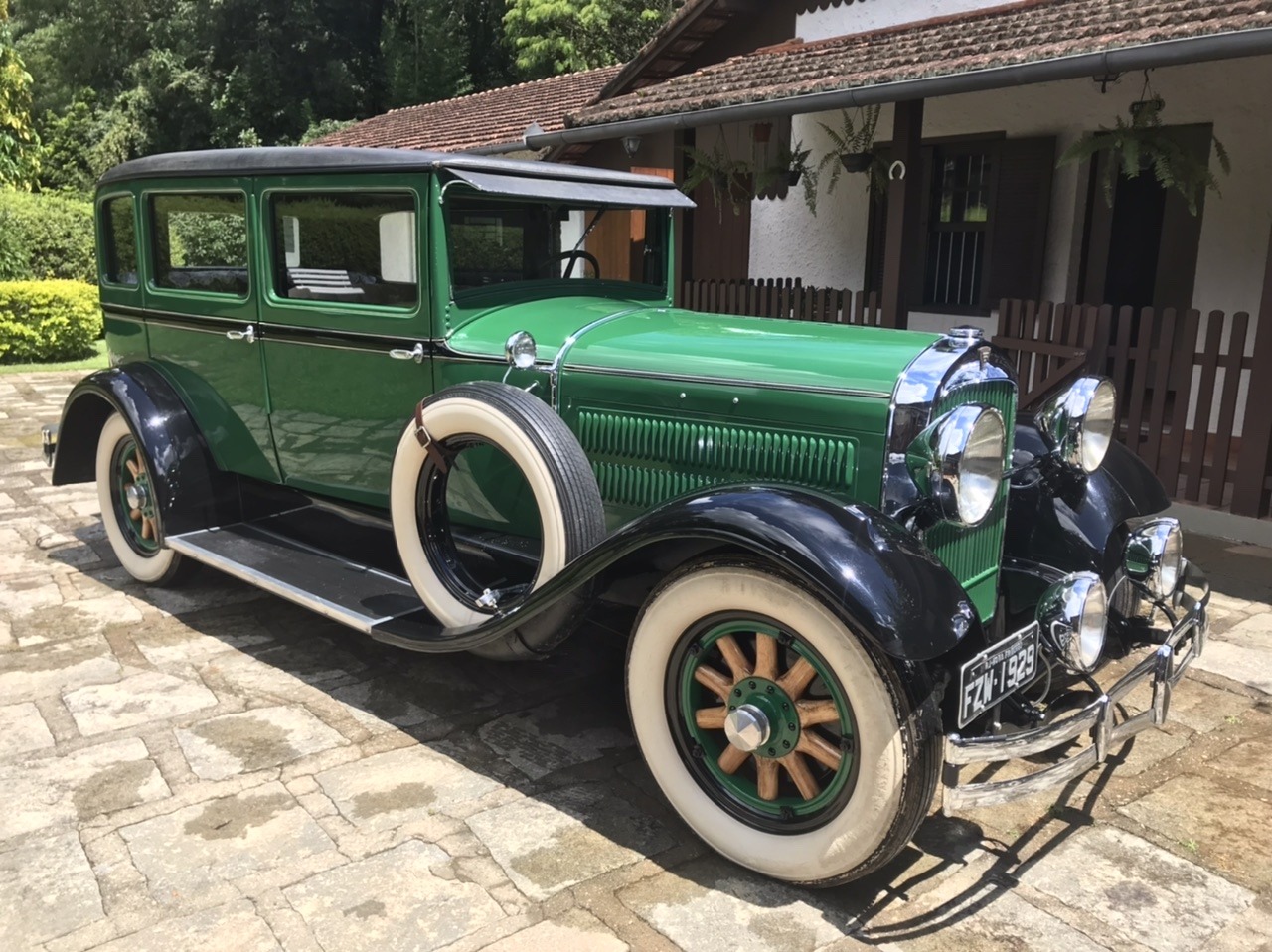
Julio Albernaz
julioalbernaz@hotmail.com
+5521993512998

0
Comments
-
Beautiful looking car
Might your belt be slipping not properly running the water pump just a thought best of luck0 -
A major cause of overheating is retarded ignition, or too weak a mixture. You say you have had new radiator. Are you losing water? Is the radiator steaming.? What is the temperature gauge reading.? Another cause is vapor-lock, particularly with the fuel you are using. Try connecting a flexible tube into the throat of the carburettor feeding cold air in from under the radiator. Sounds to me like the fuel in the bowl could be boiling. Disable the heat exchanger, and don't allow any heat around the intake. Remove the air filter and see if that makes a difference. If you have the original splash trays around the engine compartment, remove them and allow as much air as possible to circulate. Make sure the fuel pipe is routed around the front of the motor, away from the exhaust manifold and pipe. Do everything you can to have as much air flowing around the engine compartment as you can. Good luck,
Geoff
0 -
27% ethanol is certainly way more than we have in the U.S. Here, it seldom goes higher than 10%. And I have never heard of more than an occasional Super Six engine overheating. So, I wonder if that gasoline mixture may have some bearing on the problem. If it affects the timing of the engine, that could cause overheating, which might spread to the coil.0
-
jalbernaz said:I talked with some Hudson Super Six owners and overheating seems to be a common problem.Just to make it clear, are these owners in Brazil, like you? Then the ethanol would be a common denominator compared to (trouble-free) US owners, like Jon says.I'd like to add that a 25 % ethanol mixture, "lättbentyl", was used in Sweden from the mid-1920s and throughout WW2. I found a 1936 report that discusses its pros and cons, and one of the problems mentioned is engine overheating. The author essentially says this can't be explained by the properties of the fuel alone. He says the only possible explanation for such high temperatures is that the mixture has been changed so that it is too rich, and he points out that when switching to this fuel, no adjustments should be made other than advancing the timer and increasing the preheating if necessary.Also, have your other antique cars been used in Brazil for a long time, with this fuel? A 1948 book of mine points out that this fuel mixture will dissolve gum residue caused by long-time use of regular gas. The gum will end up in places where it can cause engine trouble, and so will the sand and dust that have stuck in the gum (I'm skipping the details here). So the fuel system should be thoroughly rinsed with ethanol before switching fuels.Disclamer: This is an attempt to contribute relevant material from older sources, translated as best I can. I do not have any knowledge of these matters!
0 -
I believe you all have a good point about the gasoline. I have already disabled the heat exchanger, but I still have the splash trays around the engine and the air filter on the carburetor. I will try to test the car without them. The radiator is not steaming, nor loosing much water than normal. All my other cars operate well with the same gasoline. Regarding flowing fresh air into the carburetor throat, how could this be done? I have insulated the fuel line to avoid excess of heat, with minor improvement.
Thinking on my other cars, all of them have been running in Brazil since new, so very well adjusted to the weather and fuel conditions. Ethanol has already been added to gasoline for about 35 years in Brazil. However, the Hudson spent 85 years in the state of Michigan in USA, in a totally different environment regarding weather and fuel, so the adjustment of timing could be the key of the problem. I have reviewed the timing according the manual, but maybe I should change the approach, advancing more the spark. Suggestions?
I truly believe it is easy to adapt a baby to a new country rather a senior citizen...
Thanks in advance!
Julio0 -
Check with the past owner0
-
If cooling the coil allows it to move, that is the first part of the problem. Time for a new / different coil perhaps. All engines "feel hot" and if the coil is the issue it may be that the engine is indeed not overheating. Is the radiator losing water, ? Is it actually boiling ?
Phil0 -
You have already discovered a slight improvement by insulating the fuel line, which indicates a hot carburettor, and not a cooling problem as such, as there is no steam or water loss. More questions. Are you still using the vacuum tank, or an electric pump? Is it still the original Marvel carburettor? To direct cold air in tot he carburettor throat I used a section of flexible demister hose, under the radiator cowl, and into the carburettor throat. Please persevere - the '29 Hudson are a marvellous motor car when everything performs as it should.
Geoff
0 -
The car operates with an electric pump, with a bypass return for the excess of fuel to be directed back to the tank. The carburetor installed in the car is a Detroit Lubricator model 25. Despite the carburetor is working properly, I have just ordered a repair kit from Jon Hardgrove of Carburetor Shop, just in case. The ignition coil is about 2 years old, from Brillman Co. No boiling water in the radiator. And the fan axle was serviced an lubricated recently and the belt is properly tighten.
The engine looses power but does not die, even being very hot. It keeps running, but the car cannot move a foot in flat ground.
You can see in the pictures the set up. There are two fuel lines entering into the carburetor bowl filter, an insulated one from behind the engine coming from vacuum tank, and other one coming from electric pump. There are valves shutting off the vacuum tank line. I was mistaken about the splash trays, the Hudson does not have them, I confused with my other cars that have them installed.
Julio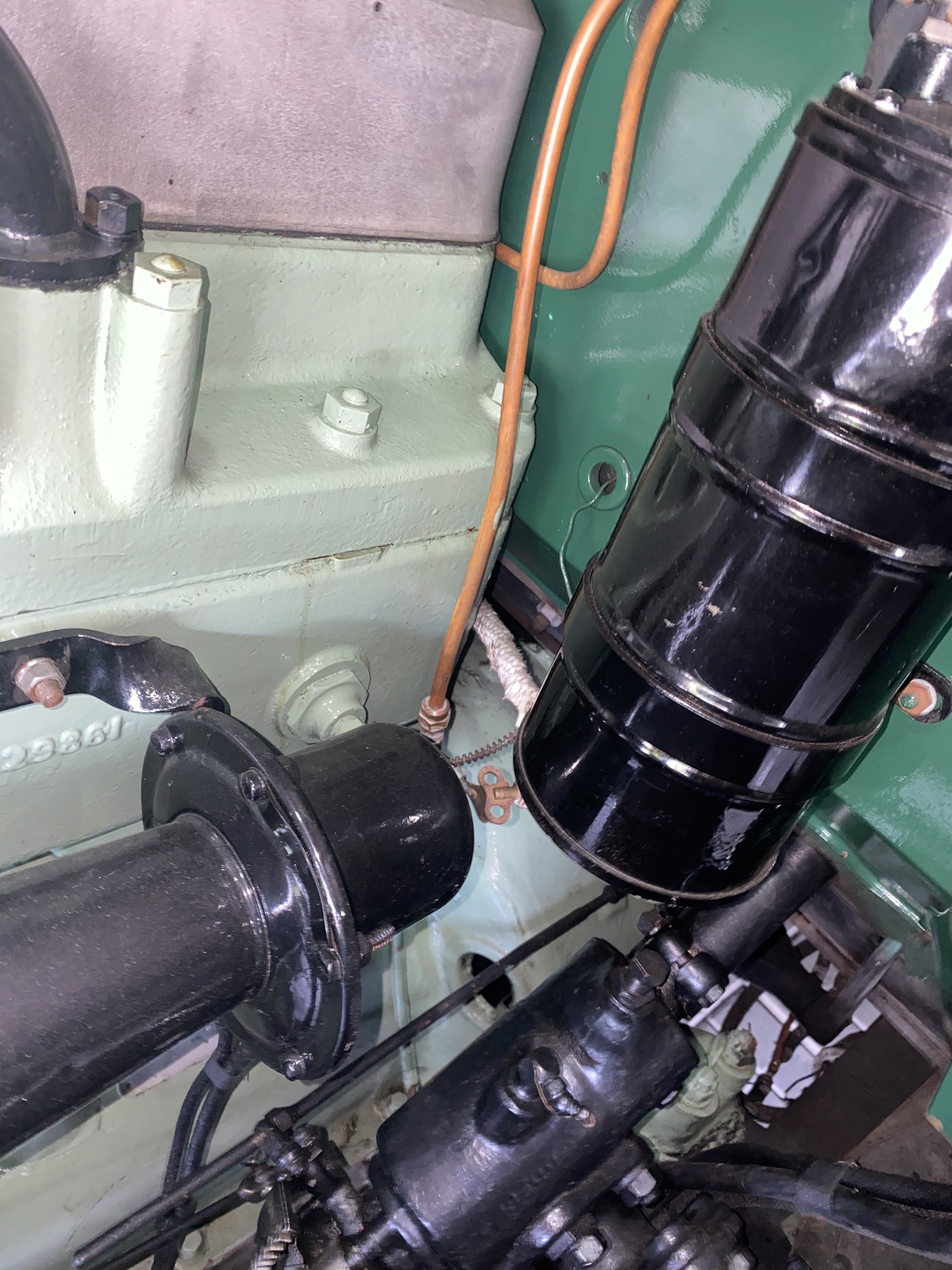

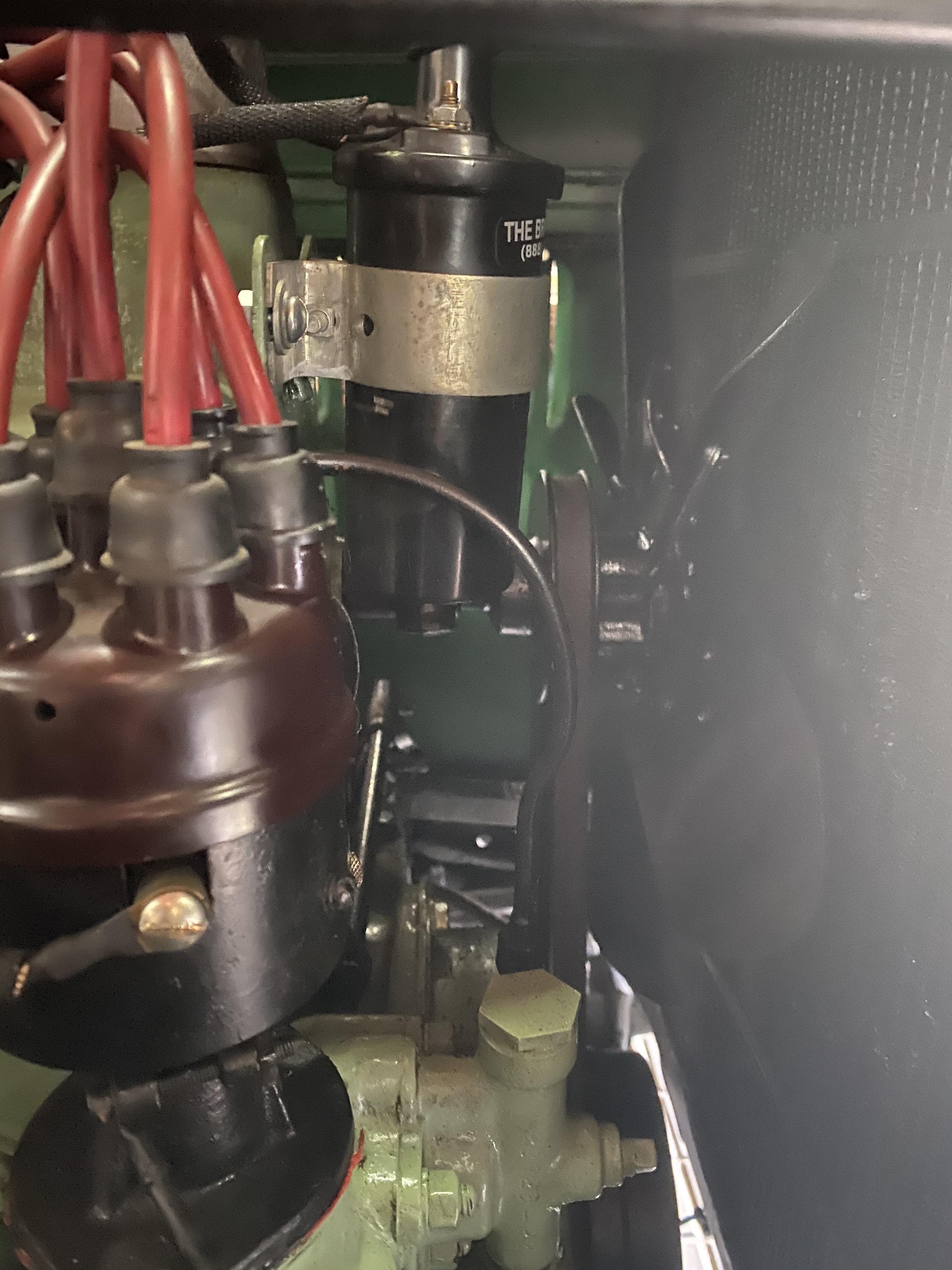
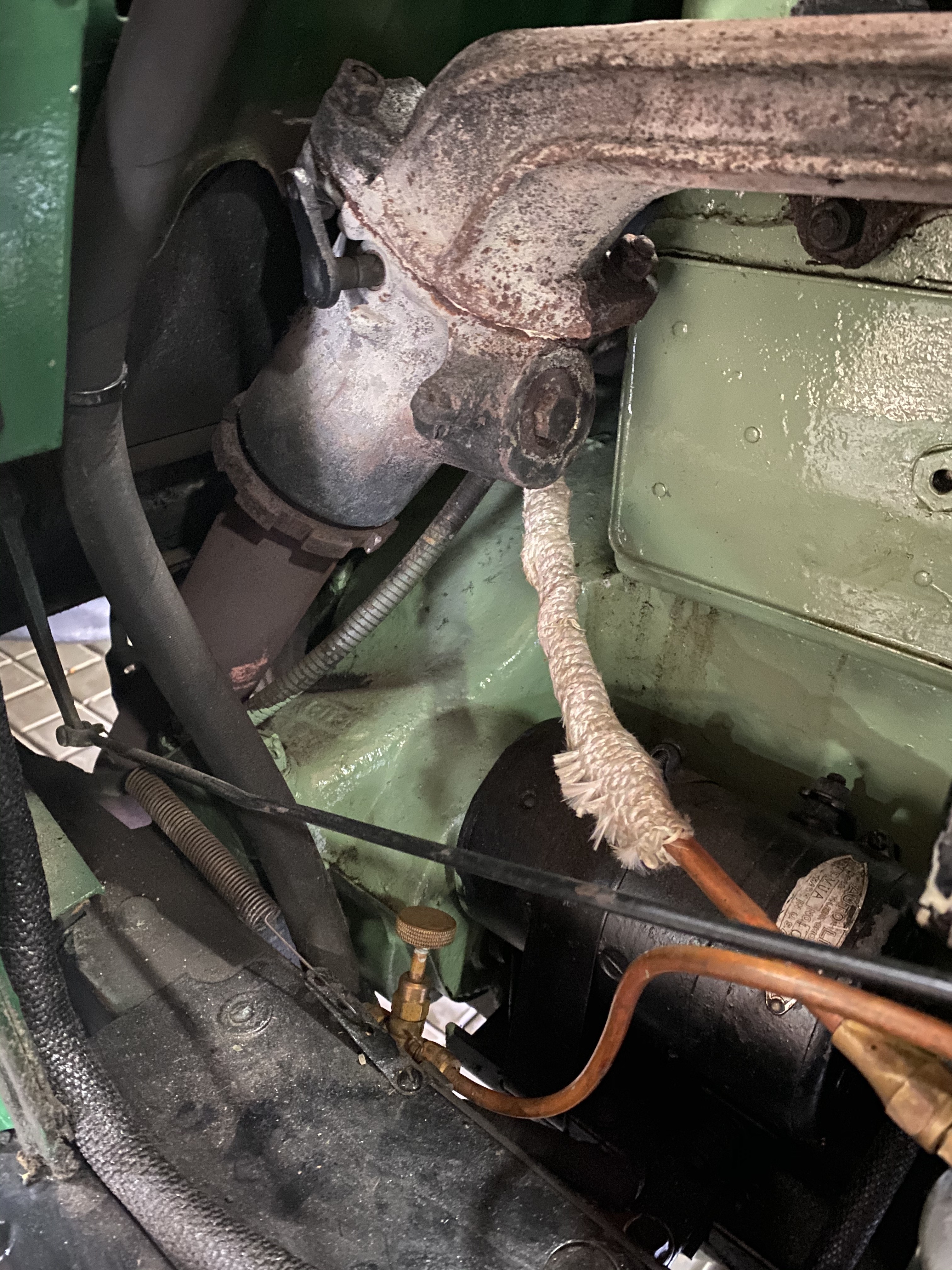
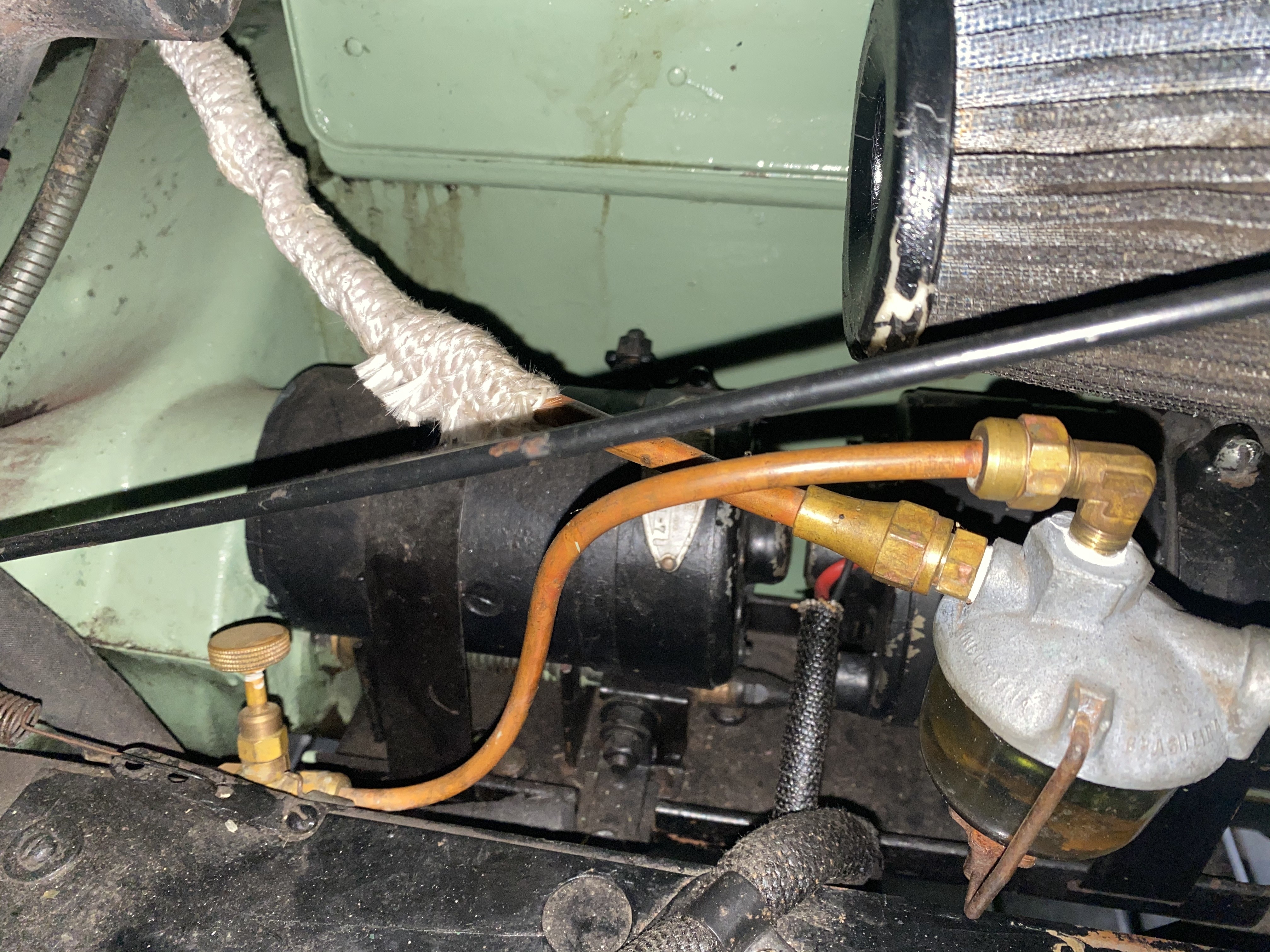
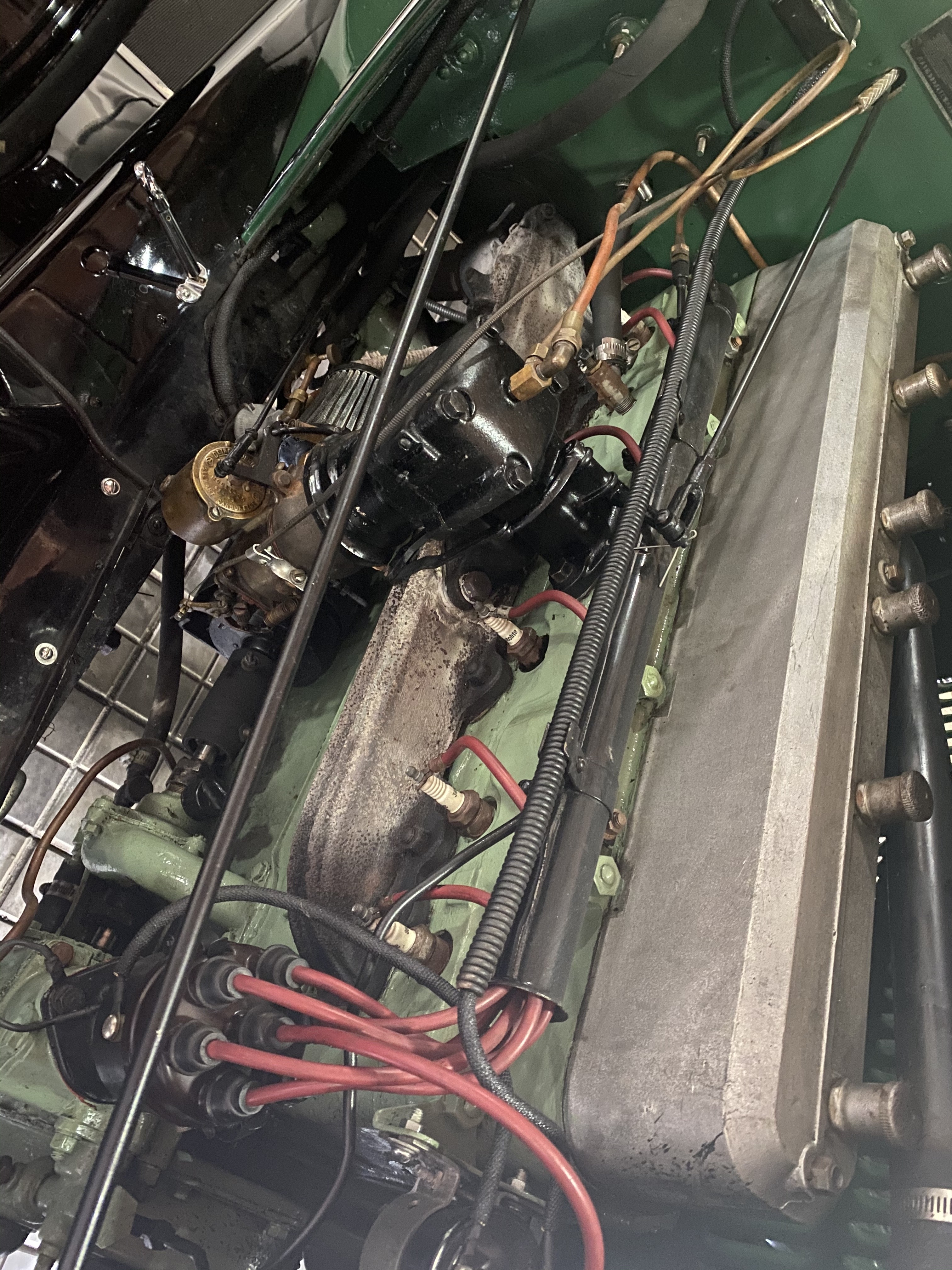
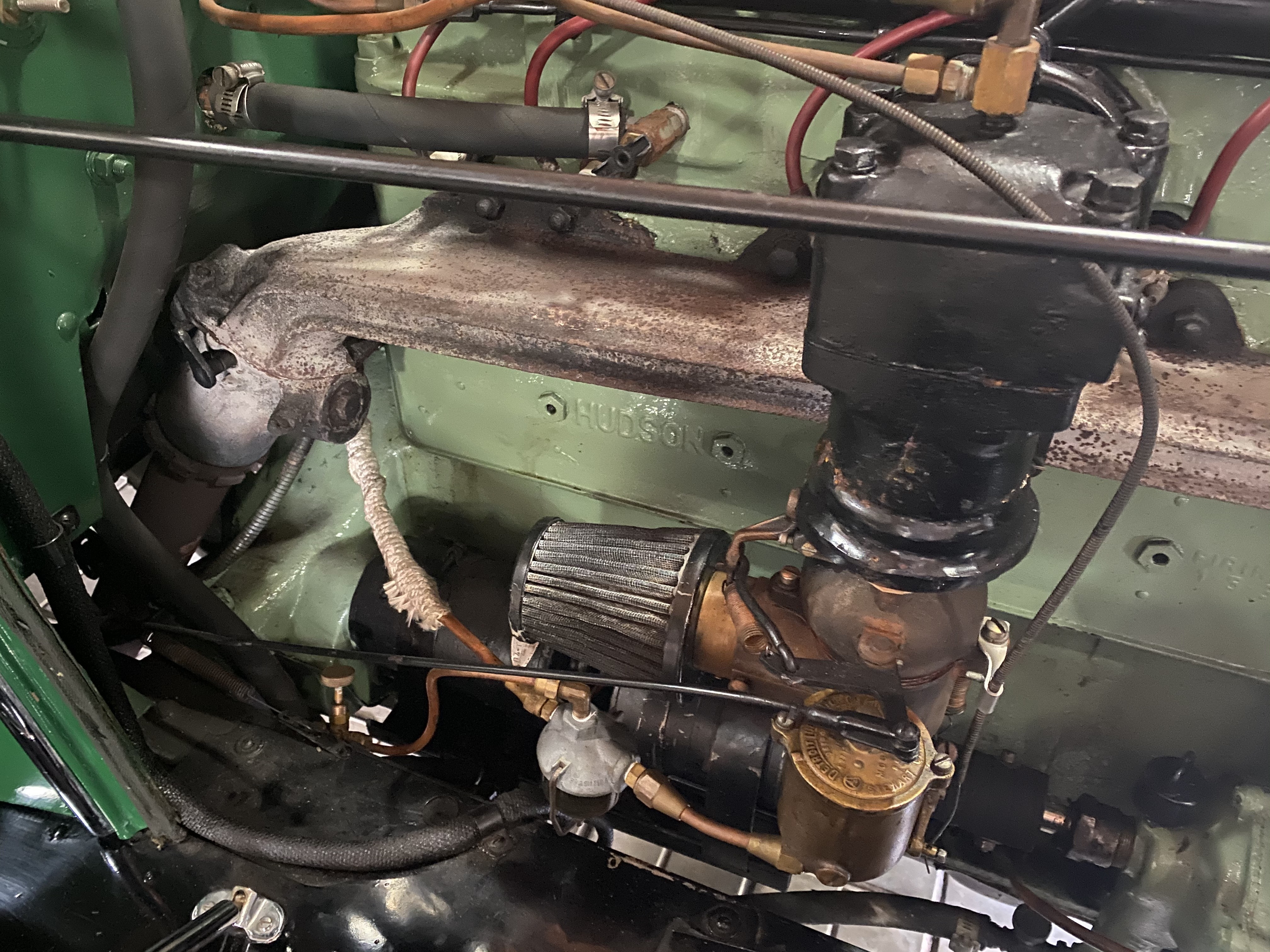
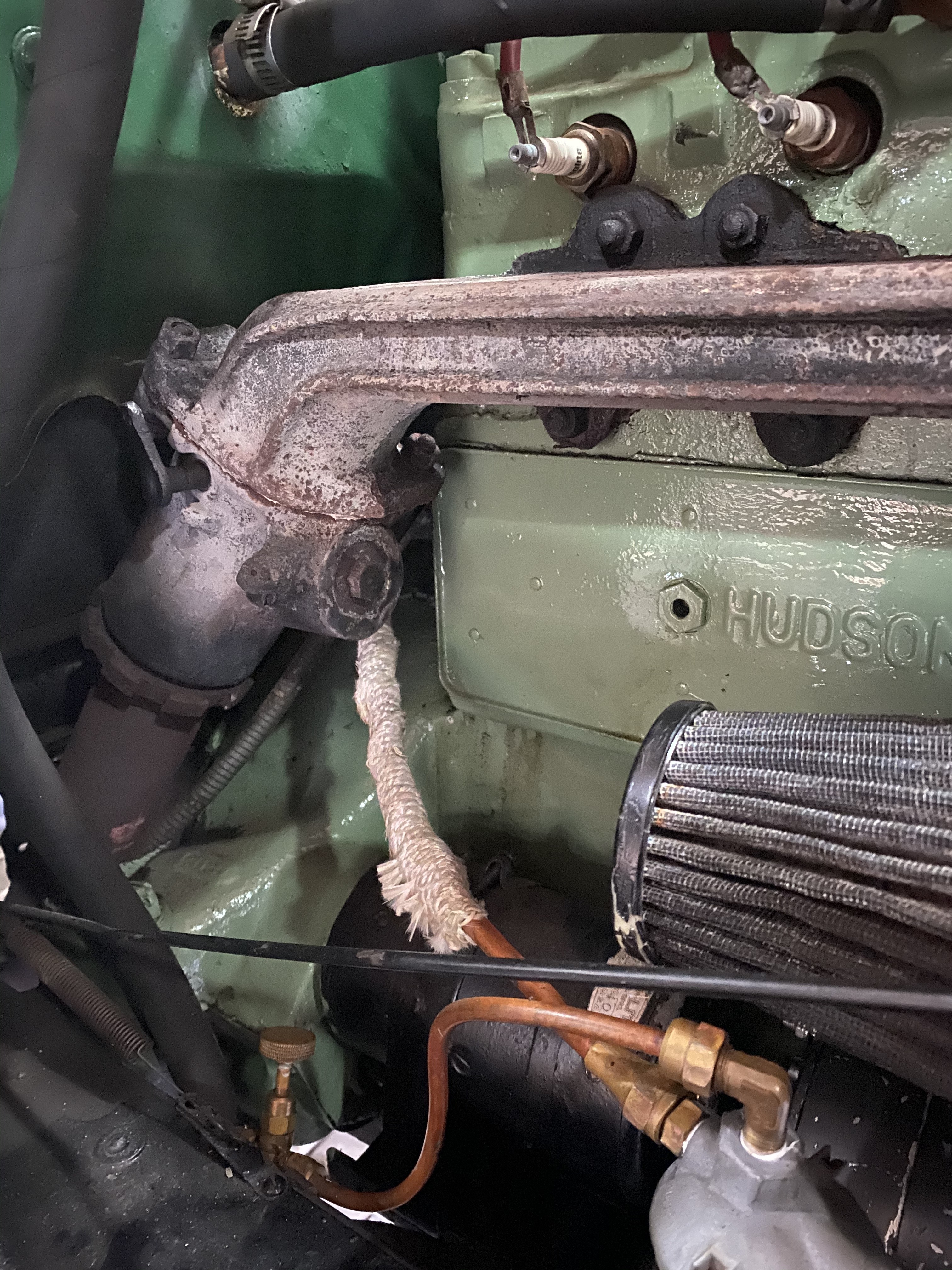 0
0 -
Your carburetor and adaptor look to be mounted higher than the original Marvel carb. Appears to be closer to the exhaust manifold. If you have a connection to the previous owner ask if the block has ever been flushed out by removing the core plugs an cleaning with a stiff wire to remove the buildup of sediment. Check your valve clearance’s make sure they aren’t to tight and expanding enough to stay partially open. If the wet towel on the coil helps? Try using a couple of jumper wires and relocating the coil temporarily . Good Luck. Once you solve the problem you will love driving your 29.
0 -
Wow, someone went to a lot of work to put the wrong carburetor on your car. That’s where I would start as a suspect. Unfortunately your missing a lot of the components to even think about putting the correct carb back on. You could flip your intake upside down and fit a down draft off a Ford 300 6 cyl or a chev 292. Not a pretty option to look at.Question, is your new rad old style honey comb that is 2” thick ? Or is it a modern replacement that is much narrower?0
-
I had a 29 Hudson I drove on 90 degree days at freeway speeds.
I suggest you remove the cap held on to the upper intake , 4 bolts and a line , and look inside to see if exhaust has burned through the sides.
I had sleeve made , easy fix.
0 -
HyGrade used to sell replacement Venturi sleeves. I had a new one made out of stainless. They are pressed fit, but his manifold looks modified?0
-
Your problem is entirely due to the brass Stewart carburettor which is directly exposed to the exhaust manifold heat. It is an excellent carburettor, but cannot dispel the heat, and the fuel vapourises between the float bowl and the metering chamber. This carburettor is off a 1926 Hudson, and in it's original installation on the side valve engine, it was situated un der the inlet manifold, so shaded form the hot exhaust manifold. You will need to construct a heat shield between the manifold ant the carburettor, and as I advised earlier , somehow get a direct feed of cold air into the throat. Nothing else will work. The action of "cooling the hot coil" is actually giving enough time for the carburettor to cool down again, and is not the issue. It would help slightly if the carburettor was turned around, as in the present configuration the air is being drawn form the hottest part of the engine bay. Even if a curved pipe was made up, and air drawn directly from the louvres may help. I had exactly the same problem with a Stewart (Detroit lubricator) on my own Super 6, and after fitting the cold air intake form un der the radiator it eliminated the problem. You are in a much hotter climate than here, so you must work on this angle. Nothing else will work.0
-
While I completely agree with everything that Geoff has said, I will also suggest that you absolutely need to stop the vapor lock that you are experiencing. The gas is boiling and the insulation on the tubing is insufficient. Your gasoline line is in the wrong path and simply moving it will substantially help. The fuel line should run down from the vacuum pump and, instead of passing across the back of the engine towards the hot exhaust, bend forward under the temperature sensor, under the horn toward the front using the corner of the crankcase as a path, then turn across the front of the engine passing the oil pump and distributor base to the carburetor. Much cooler this youway and would need to do this regardless to what you do with the carburetor.0
-
If you decide to change the carby, I have a spare 1927 Marvel.0
-
That air filter sure looks dirty, could it be starving for air?
0 -
How about doing a quick test routing the fuel line in a cooler path to see if vapor lock can be avoided? Just quickly run the line from the pump hookup down under the engine and up to the carb inlet. Then take it out for a test drive.
Here is an example, below, of what I originally meant for a permanent remedy, and this was how my car was fitted before I took the whole thing apart. Note this 1928 car has the original Marvel carburetor with gas feed on the right toward the water pump.
BTW, anecdotally, my dad had problems with vapor lock on our string of old cars when I was very young (this was in 1950 +/- a few years.) I remember him pouring cold water on the fuel lines but he complained that once this happened, it was very hard to remove the bubble blockage. I watched him work to reroute the lines on several of the cars. Part of his solution was to put a drain valve at the carb with a Tee to flush out the bubble. That's not something I would do because gas goes everywhere. The problem usually happened when we took a drive up into the Angeles Crest forest during the summer and usually at high altitude. The engine always ran hot with the long steady hill climb.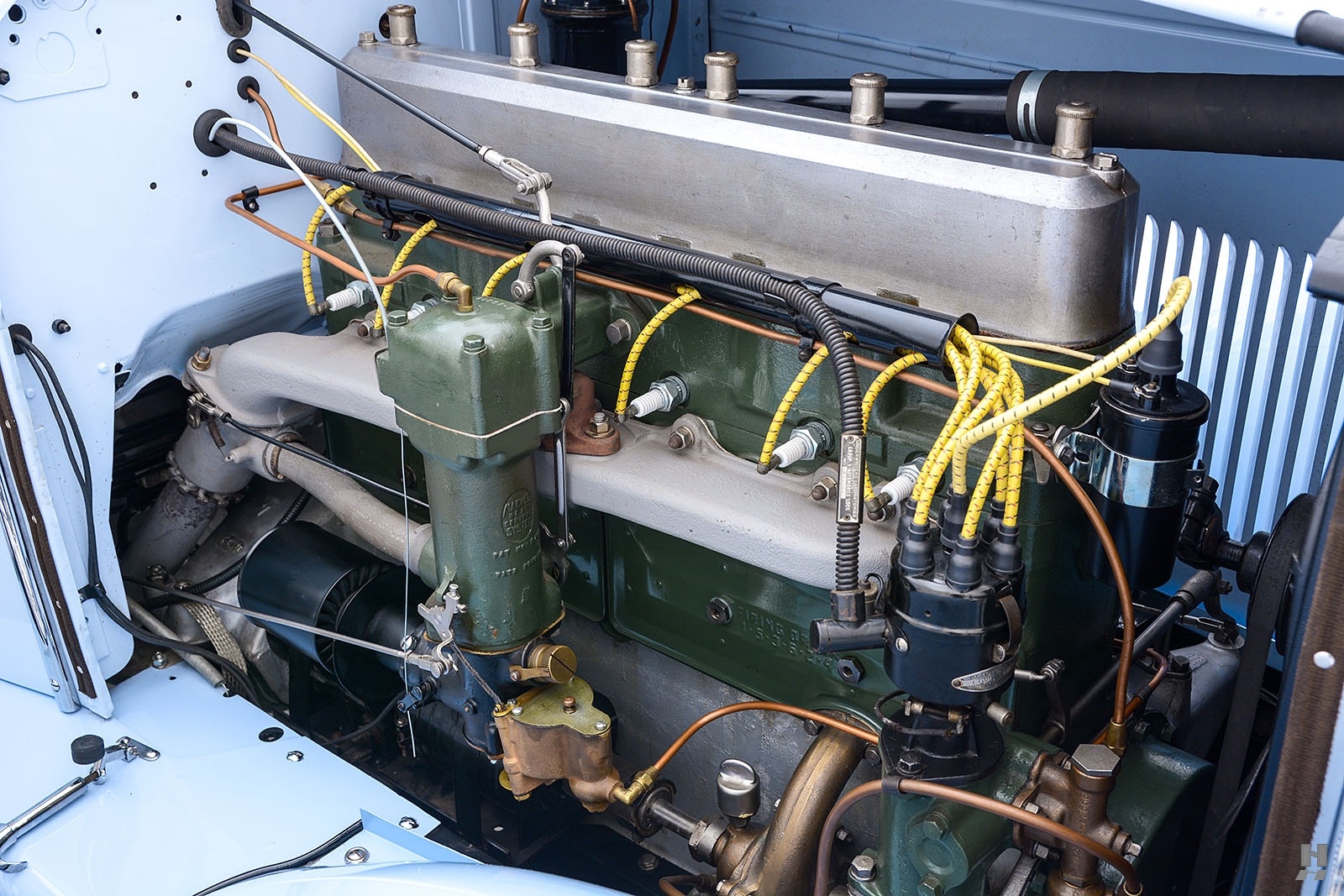
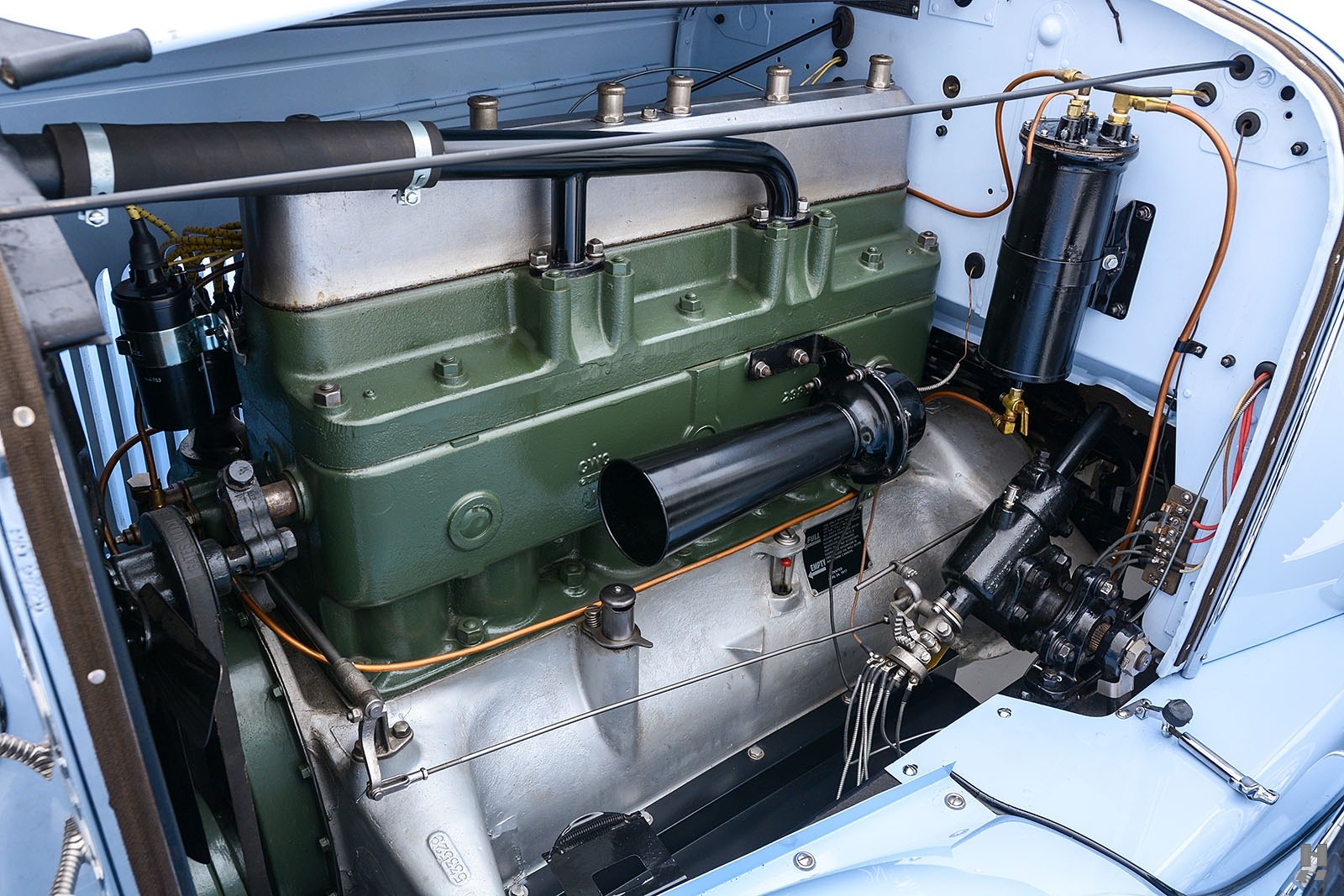 0
0 -
Ok, I'm throwing out another idea. Excessive dwell. A distributor issue. Dwell is the time (actually number of degrees) that the points are together to charge the cap. Really excessive dwell will overheat the coil because of current draw, and you can destroy it if ridiculously long. It will overheat and just burn up. The internal wire connections will melt. Dwell is controlled by point gap. Increase gap and decrease dwell, decrease gap and increase dwell. Points can be eroded with the deposition of metal on the other, as a peak or hill. For best control, they both should be smooth or flat. If not, use a point file to remove the peak because the wire feeler gauge used to set the gap will not be correct otherwise. BTW, you always set the dwell before you set the timing. Every time.
The info from the 1929 Technical Handbook says: "Timing 10 degrees BDC fully advanced. Breaker point gap .020 in." I find this to be too small, and personally prefer 0.025 in. If this idea isn't applicable, you can throw it out too.0 -
One could always run some of this cooling system cleaner, just in case something is stopping or slowing flow. At least then you can check that off the list of possibilities.
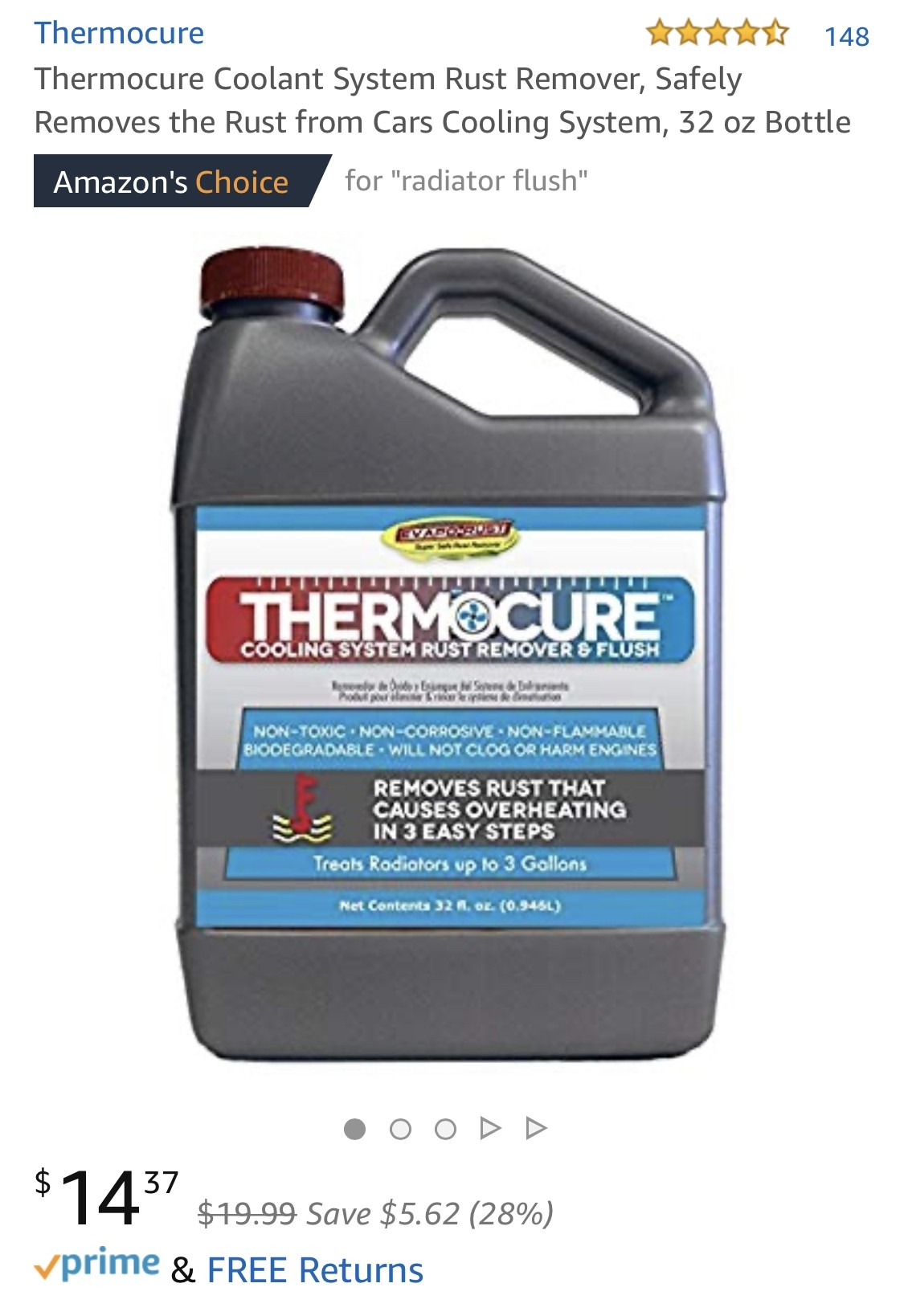 0
0 -
It's not the cooling system, it's the fuel boiling in the bowl.0
-
Hello Guys, based on your comments, I am taking some actions:
1) remove air filter
2) change the route of the fuel line and position of electric pump under the frame, to the opposite side of exhaust tube
3) change the route of the fuel line under the hood to the front of the engine
4) rebuilt the carburetor adaptor to the intake manifold to eliminate some cast iron cracks and also block entirely the heat exchanger access
Once I have them all done, I will test the car and see how to evaluate the distributor, because I really believe the timing also needs some adjustment also.
Anything else?
Thanks,
Julio0 -
Fit a heat shield between the carburettor flange and the manifold adapter. Best setting for the ignition , with a timing light is 2 to 3 flywheel teeth before t.d.c. with lever in fully advanced position. Good luck
Geoff
0 -
Many thanks to you all for the very valuable information and contributions. I will use the engine compartment pictures as a good standard (other pictures are also welcome!!!). Soon I will return with more information about the car rides!
Thanks again,
Julio Albernaz
julioalbernaz@hotmail.com
+55219935129980 -
Julio, I hope you are having some success with your car. Please tell us your progress.
Meanwhile, I have found a video on YouTube of a 1929 Hudson with your same engine. It, too, has a modified carburetor, but look at what they have done! The engine closeup starts at 4:37 into the video. I would not ever do this to my car.
https://www.youtube.com/watch?v=oscwlzXzLJI&t=72s
0 -
I would not want to detract from the workmanship involved, but I would give this only a 5/10 for originality and obvious things that are definitely not right.0
-
Geoff, I completely agree. No originality here but. The 1922 through 1925 all had the 'box' intake manifold bolted to the exhaust manifold with updraft carbs 1922-1924, so this is a previously discarded idea. (Maybe other years as well.) The 1925 had a downdraft carburetor fastened to the top center of the box. That too was immediately discarded because they leaked gas.0
-
It sure sounds like it runs better, and is more responsive than the factory updraft setup... I've not been able to find a factory '29 carb for my coupe, and the last one I saw on EBAY, sold for over $500, so I'm making an intake manifold and using an earlier Hudson side draft carb on mine.strangeplant said:Julio, I hope you are having some success with your car. Please tell us your progress.
Meanwhile, I have found a video on YouTube of a 1929 Hudson with your same engine. It, too, has a modified carburetor, but look at what they have done! The engine closeup starts at 4:37 into the video. I would not ever do this to my car.
https://www.youtube.com/watch?v=oscwlzXzLJI&t=72s0 -
I bought one of the bronze carb bowls and covers for the 1929 Hudson Marvel carb. From John Meadows when he was making them. I heard that Victor bought the carb. Repro set up from John?0
-
Categories
- 36.9K All Categories
- 113 Hudson 1916 - 1929
- 20 Upcoming Events
- 92 Essex Super 6
- 28.6K HUDSON
- 574 "How To" - Skills, mechanical and other wise
- 995 Street Rods
- 151 American Motors
- 178 The Flathead Forum
- 49 Manuals, etc,.
- 78 Hudson 8
- 44 FORUM - Instructions and Tips on using the forum
- 2.8K CLASSIFIEDS
- 608 Vehicles
- 2.2K Parts & Pieces
- 77 Literature & Memorabilia
- Hudson 1916 - 1929 Yahoo Groups Archived Photos
